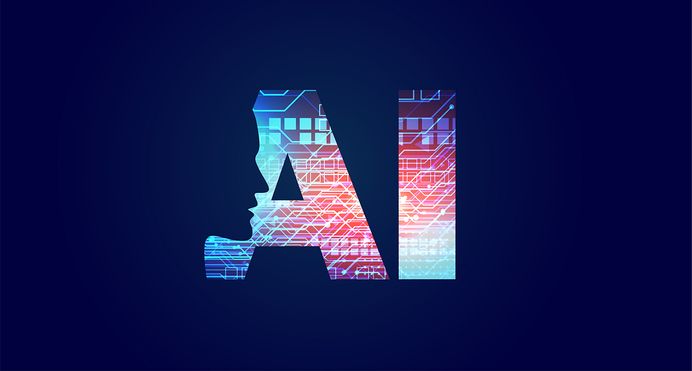
A Guide For Executives Of Financial Institutions To Pick The Right Intelligent Virtual Assistant Vendor
(Author: Srinivas Njay, Founder & CEO, interface.ai)
Introduction
Over the past few months, the adoption of Intelligent Virtual Assistants (IVA) has skyrocketed among Financial Institutions. This rapid increase in adoption was triggered by the pandemic and its impact on the traditional modes of banking. During this period, several financial institutions adopted IVAs to serve customers better and were surprised by the rapid ROI-generating capabilities of the technology.
There has been a wholehearted appreciation of the possibilities with the technology by the early adopters. With firms like interface.ai also making the technology very affordable and accessible to financial institutions above $100M in assets, several hundreds of financial institutions are expected to adopt IVAs by the second quarter of 2021. These factors, along with the industry being close-knit, have led to the widespread evaluation of the technology and inclusion in their immediate technology roadmaps.
AI for financial services has seen huge growth. Considering many financial institutions are evaluating IVA vendors for early next year and with the market having several different types of players that offer IVAs, we wanted to break down the market and help financial institutions identify the right fit Intelligent Virtual Assistant vendor for them.
Understanding the IVA vendors serving Financial Institutions
We can broadly classify the different vendors offering IVA solutions to financial institutions into 3 groups.
- Industry incumbents or Me-too vendors
- Generic Vendors or Industry agnostic vendors
- Financial Industry Specific Vendors
Industry Incumbents or Me-too Vendors
These are the companies that have been serving the financial industry for several years, offering various products and services, and with the upturn in the adoption of IVAs, they have added IVAs to their suite of offerings. Banking and AI today are going hand-in-hand.
The issue with industry incumbents is that they do not specialize in IVA technology. Not only is the IVA technology very complex, but it also requires the companies to reinvent every function internally.
Consider the delivery organization; for example, traditional project management practices do not apply anymore because AI systems are not systems you set up and forget. They require continuous maintenance and support. This requires vendors to create new maintenance and support models to successfully set up and continue to deliver value for customers.
Next, let us consider the core platform. To build an industry-leading IVA, the core platform team should comprise a good balance of enterprise architects and machine learning engineers. Finding high-caliber recruits for these roles is a challenge. Alternatively, vendors can opt to leverage external platforms from Google or Microsoft to get around this challenge, but these eternal platforms limit the capability of the IVA as they may not move fast enough to meet the industry-specific needs of their end-users. Beyond the core platform, there is a need for a suite of niche tools necessary for the teams to build and maintain IVAs.
Additionally, to successfully develop and manage IVAs, a new function and a new role of a Conversational Experience Specialist needs to be created. These roles do not exist in the industry currently. These roles require people to think like designers, write like an expert copywriter, be experts in technology required to train an IVA, and also understand the financial domain like a call center trainer. This unique blend of talent is required to build IVAs that provide a high-quality customer experience.
On top of this, these Industry Incumbents will need to compete with Industry-specific IVA vendors that offer numerous industry-specific out-of-the-box solutions, who are already processing millions of industry-specific conversations leading them to achieve a higher level of accuracy and continuously delivering higher value. These specialist vendors have already developed a moat and continue to incrementally offer better value through each customer acquired, and every conversation processed.
If industry incumbents attempt to overcome all these challenges through large investments, they may risk jeopardizing many internal business units that are currently generating billions of dollars for them today. This is because IVA as a technology is poised to replace many of the technologies offered by these vendors. Not to mention, these vendors will also need to overcome the internal bureaucracy considering the reinvention required at every internal function, large upfront investment, and considerable risks to the current business units.
Generic or Industry Agnostic Vendors
These companies are technology-focused and offer platforms that help an enterprise to build its own IVA.
This essentially means that the financial institution will be purchasing a platform and will need to invest considerable resources to build the IVA and maintain it. As we saw with Industry Incumbents, this means the financial institution will need to build new teams with specialized skills as it will not be straightforward to build these capabilities with the existing teams in financial institutions.
This means there will be significant hurdles even to build basic use cases that may help you to prove viability internally.
Another major issue with such vendors is the lack of industry understanding. This leads to such vendors not offering any out-of-the-box solutions that address the challenges of financial institutions today and not having a roadmap that aligns to address the challenges financial institutions may face in the future. For example – interface.ai, which is a financial industry-specific vendor, even offers solutions to enable financial wellness among customers, which may not even be in the roadmap of such vendors.
To expand a little more, let us consider a call center offering, which is one of the most popular offerings in the market, and explore the differences between a generic vendor’s offering & interface.ai’s offering – the Artificial Intelligence-powered call center. interface.ai’s AI-powered call center transforms financial institutions’ call centers from a cost to a revenue center by driving member engagement, upsell & cross-sell, and automation. In contrast, a generic vendor’s offering will be limited to automation based use cases. To understand the impact of interface.ai’s solution, let us consider a financial institution that received 50,000 calls on its call center every month. With interface.ai’s AI-call center, this financial institution can generate 3,000 new leads every month, leading to thousands of dollars in new revenue opportunities every month. This introduces a large opportunity cost in choosing a generic vendor.
Essentially, platforms offered by generic vendors may limit you to just offer basic use cases.
This also means that you will need to invest heavily in resources to train the platform with domain-specific knowledge from scratch, also leading you to lose out on all the accumulated knowledge that will ensure the IVA improves automatically and the higher accuracy you will experience from day 1 with an Industry-specific player.
Also, Industry agnostic players may not have the necessary integrations with vendors of your internal systems such as the core banking, online banking, online application tracking, call centersystems, etc. that are more prevalent in the financial industry. This leads to more uncertainties on the system to system compatibility.
Finally, as seen with Industry Incumbents, competing with Industry-specific vendors and their ever-growing moats will be a challenge.
Financial Industry Specific Vendors
These companies understand your industry in-depth and the pain-points associated with it which leads them to proactively create solutions to all banking challenges. For example, interface.ai has developed over 60 out-of-the-box solutions proactively to ensure challenges across the entire banking customer lifecycle are addressed.
They already have the specialized teams and infrastructure necessary to build and maintain successful IVAs for the financial industry and have proven experience in delivering millions of dollars in value for their customers.
Their core platform is also developed internally to avoid dependencies on any external platforms that may restrict the capabilities of the IVA. They will also have out-of-the-box integrations to the majority of the internal systems that are prevalent in the financial industry.
They will have processed a large number of domain-specific conversations on the platform already, which leads to the accumulation of high-quality domain-specific data that will ensure a high level of accuracy and will continuously drive high value for their customers. Their platform and their data moat will also ensure any new customer they onboard will start reaping benefits from day 1. The value these players offer will continue to grow incrementally with every new conversation processed.
When evaluating these vendors it is very important to also understand the following –
- The width of their offerings – As these players proactively build solutions to solve problems and address issues across the entire customer journey, they must-have solutions for each stage and use case. Considering how the IVA is something that works across the entire organization, this becomes crucial. For example – interface.ai has developed over 60 out-of-the-box solutions for every step of the customer journey.
- The channels they support – Vendors that support across all banking channels are key. Several financial industry-specific IVA vendors do not even offer solutions such as call center automation, which is one of the top applications of IVA in terms of the value it offers to a financial institution by creating operational efficiency and customer satisfaction.
- Roadmap – It is very important to understand the roadmap of the vendors. This gives you an understanding of what is possible through their solutions and if they can proactively impact the top-line and bottom-line of your organization continuously rather than you and your resources driving solution development.
- Partnerships and Sales Channels – Understanding the channel through which vendors are selling IVAs is a good indication of the clarity of their roadmap and what you may come to expect from the IVA in terms of ROI and other operational gains. For example – If someone is selling their IVA through their partnership with an online banking or mobile banking player – it severely jeopardizes the possibilities with an IVA as an IVA can potentially even replace an online banking platform. This shows that the vendor themselves might not have a clear understanding of what is possible with IVA.
Another trend in the financial industry today is that there are a few vendors who claim to offer an IVA. These vendors offer an outdated technology that provides a fraction of the benefit that genuine IVAs offer. Read this blog to understand more about the differences in technology, the potential impact generated, and how to identify such vendors.
In conclusion, considering the vast possibilities with the IVA technology and the millions of dollars in ROI the technology is already enabling for the financial industry, it is important to evaluate vendors based on the possibilities for both the present and the future.
Financial Industry-specific IVA vendors are expected to provide the most value for your investment and the best chance at a long-term successful strategy.
Discover the Latest Insights on Interactive Intelligence for Banking Newsletter
Join the newsletter to receive the latest updates in your inbox.



